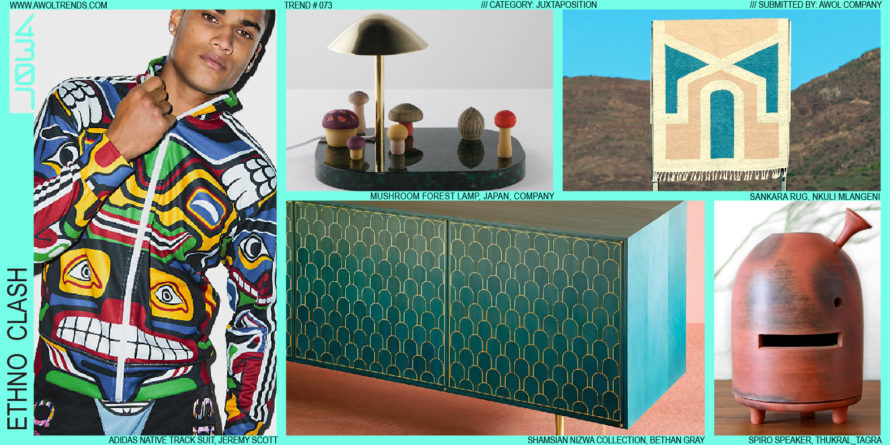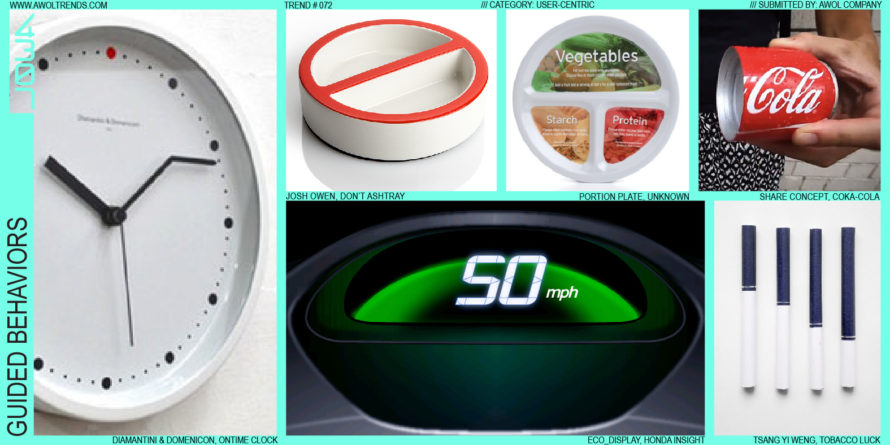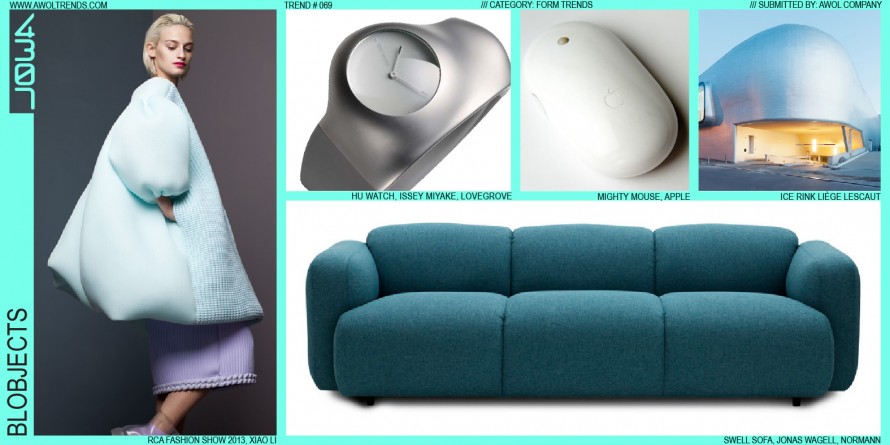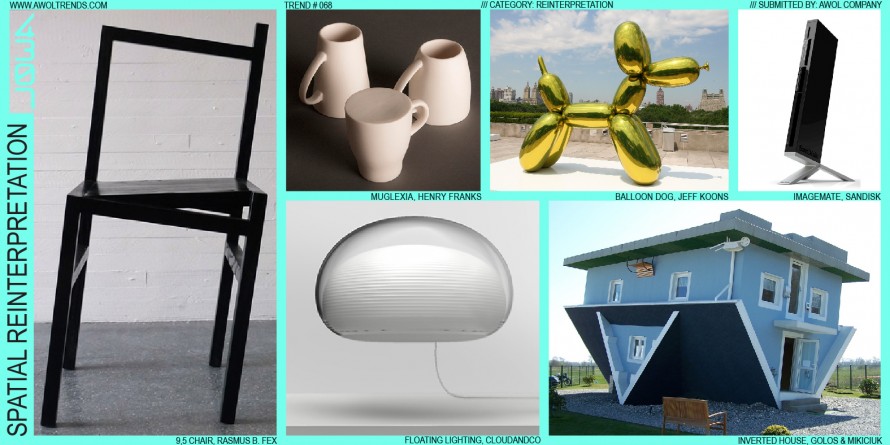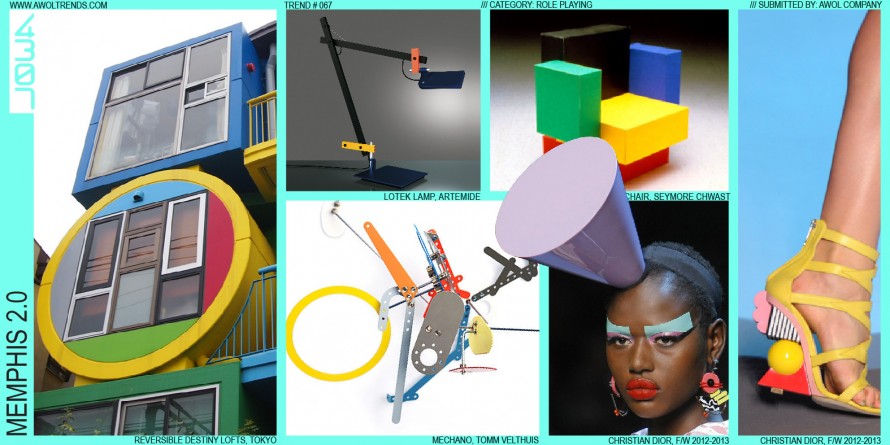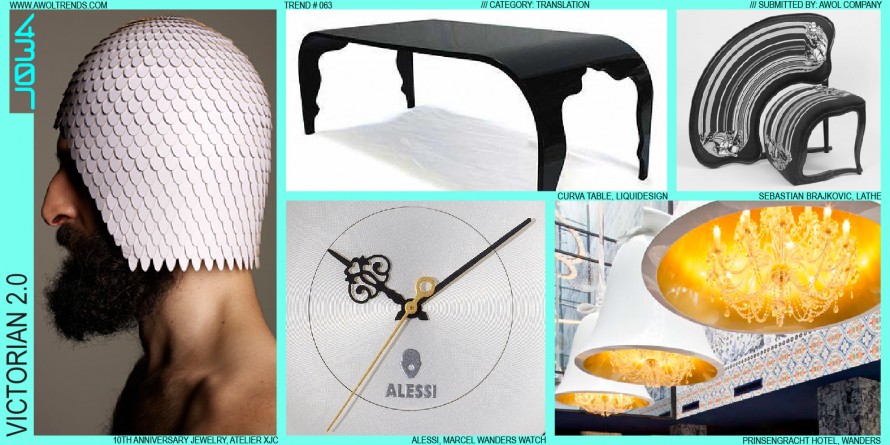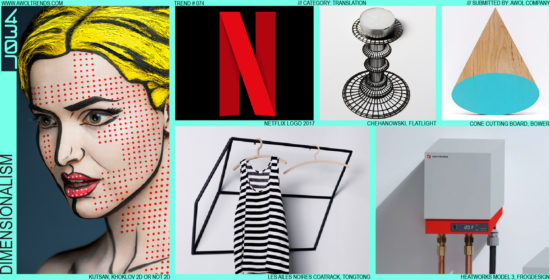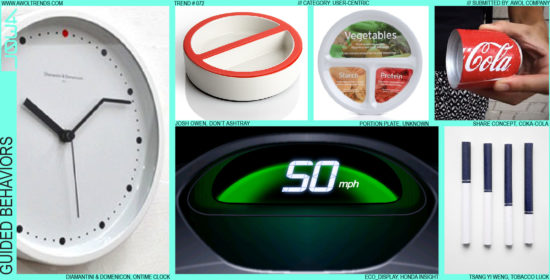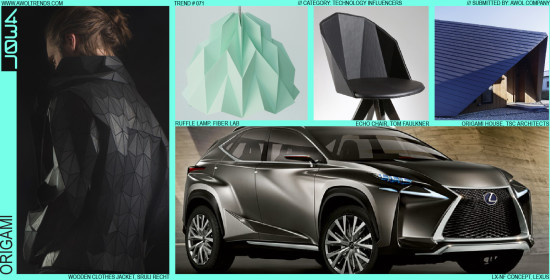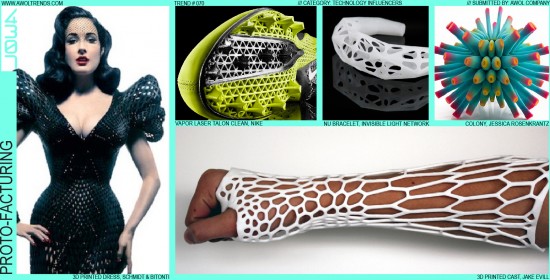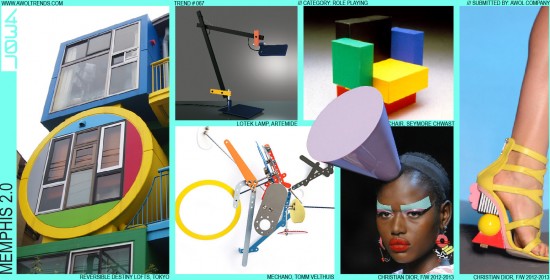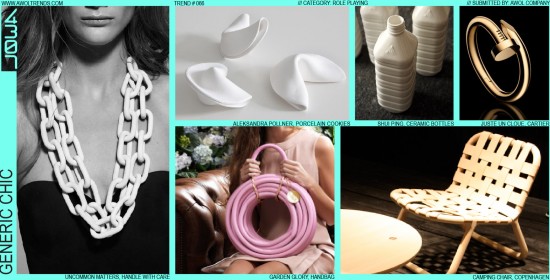The world’s first open-source design trend database, made by designers for designers. Brought to you by AWOL Company, this free site is a database of our curated design trends that we’ve been tracking for several years, looking at viable aesthetic trends across all design disciplines. Pull down the TRENDS tab...
Read more
VISIT OUR NEW SITE
AWOL Company, the curators of AWOL Trends, has a new website! Visit AWOLcompany.com to learn about who we are, what we do, and our unique perspectives on design and the creative process. ShareTweet...
Read more
DIMENSIONALISM
The discipline called “Design” is very broad, encompassing everything from Architecture, Fashion, and Product design to Graphic, Digital, and Brand Design. Generally designers specialize in one of these specific areas, and rarely work across disciplines. One of the strongest factors that divide designers is the boundary between two dimensions and...
Read more
ETHNO CLASH
Western design has effectively permeated the global aesthetic culture. You can go to any country in the world and see either the influences of Western design, or the objects of Western design themselves (iPhones, cars and SUVs, Nike sneakers, glass skyscrapers, Coke cans, high heels and sport coats, bicycles, sunglasses,...
Read more
GUIDED BEHAVIORS
Fundamentally, design is an interplay between users and technology. Almost always, this relationship is a one-way street where the technology has to be adapted, or softened, or explained, or packaged in such a way that any user can immediately understand and wield it. Note that we’re using technology in the...
Read more
ORIGAMI
The art of paper-folding originated in China and Japan hundreds of years ago, and has evolved into a masterful artistic genre. This simple method of turning a two-dimensional pattern into a three-dimensional form has been (for us Westerners) a delightful source of little paper swans, jumping frogs, boats, and tiny...
Read more
PROTO-FACTURING
Rapid prototyping has been a tool used by the design, engineering, and architecture fields since the advent of computer-controlled fabrication systems in the 1990’s. The basic methods have been either additive (stereolithgraphy, 3D printing) or subtractive (CNC machining). Additive methods slowly “grow” the part within a build chamber out of...
Read more
BLOBJECTS
The term Blobjects was coined in the 1990’s to represent an emerging trend in product design. Blob-Objects were increasingly finding favor with designers who were empowered by the ability of new 3D CAD software to sculpt and deform organic shapes. This most likely emerged as a counter to the more...
Read more
SPATIAL REINTERPRETATION
There are only so many aspects of an object that designers can influence. Physical objects have proportions, form, surfacing, color, material, finish, detailing, graphics…and that’s about it. Fundamentally, creative professionals today are dealing with the same set of realities that Greek architects or Chinese potters were considering thousands of years...
Read more
MEMPHIS 2.0
It’s hard to invent a new aesthetic. That’s probably why it happens so infrequently. However, that did not stop a young Milanese (Ettore Sottsass) and a small group of other European designers from giving it a real shot. In 1981, their Memphis aesthetic debuted at the Salone del Mobile furniture...
Read more
GENERIC CHIC
Designers in the Premium/Luxury categories have always striven to differentiate their work from the great unwashed teaming masses of regular consumer products. In trying to communicate “I am better than you”, products in these categories have relied on such design levers as length (stretched limousines), height (top hats and rooftop...
Read more
IRRATIONALISM
In the world of design, the careful study and application of the fundamental rules of aesthetics is the mark of a true craftsman. The aesthetic theme these rules have created, the modern movement of Rationalism, has deeply influenced the everyday objects in our lives. From the structures we live and...
Read more


